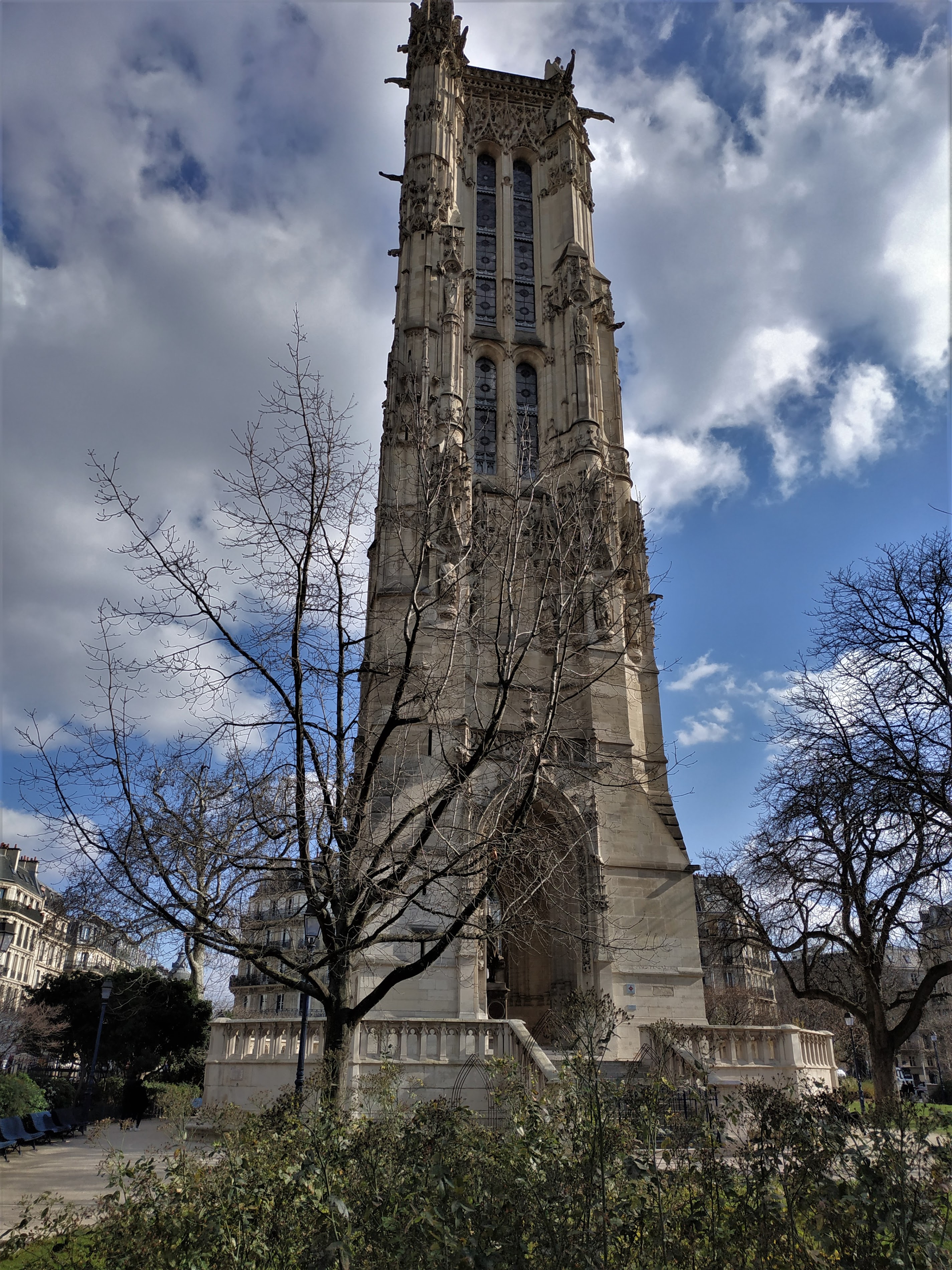Tour Saint-Jacques: A Gothic Marvel in the Heart of Paris
In the bustling center of Paris, where history and modernity intertwine, a solitary tower rises above the surrounding buildings, its intricate stonework a testament to medieval craftsmanship. This is the Tour Saint-Jacques, a 16th-century bell tower that stands as a silent sentinel, watching over the ever-changing cityscape. Once part of a grand church, now it serves as a captivating reminder of Paris's rich architectural heritage and a beacon for those seeking to explore the city's lesser-known treasures.

A Storied Past
The Tour Saint-Jacques's history can be traced back to the early 16th century when it was constructed as part of the Church of Saint-Jacques-de-la-Boucherie. The church itself was demolished during the French Revolution, leaving only the tower standing tall amidst the chaos of change. This Gothic masterpiece was saved from destruction due to its use as a shot tower for the manufacture of lead shot.
Over the centuries, the tower has been witness to the ebb and flow of Parisian life. Its weathered stones have observed the transformation of the city from medieval stronghold to modern metropolis. The tower's survival through tumultuous times serves as a testament to the enduring spirit of Paris itself.
Things to do in Vanves
Architectural Marvel
Standing at 52 meters tall, the Tour Saint-Jacques is a prime example of Flamboyant Gothic architecture. Its intricate stonework, adorned with elaborate sculptures and gargoyles, can be admired from the surrounding square. The tower is divided into four levels, each displaying a different architectural style, culminating in a statue of Saint James at the very top.
The tower's facade is embellished with religious symbols and allegorical figures, inviting visitors to decode its rich iconography. Statues of the four evangelists - Matthew, Mark, Luke, and John - can be found at the corners of the first floor, while various saints and biblical scenes are depicted throughout the structure.
A Symbol of Pilgrimage
In medieval times, the Church of Saint-Jacques-de-la-Boucherie served as an important starting point for pilgrims embarking on the Camino de Santiago, or the Way of Saint James. This ancient pilgrimage route led to the shrine of the apostle Saint James in Santiago de Compostela, Spain. Today, the Tour Saint-Jacques continues to be a symbolic landmark for modern-day pilgrims and history enthusiasts alike.
The tower's connection to the pilgrimage route is commemorated by the statue of Saint James at its summit, as well as the scallop shells - symbols of the Camino - that can be found carved into its stonework.
A Green Oasis
The Tour Saint-Jacques is surrounded by a charming square that provides a welcome respite from the bustling streets of central Paris. This green space, created in the 19th century, offers visitors a chance to relax on benches beneath the shade of mature trees while admiring the tower's Gothic splendor.
During summer months, guided tours are often offered, allowing visitors to climb the tower's 300 steps for panoramic views of Paris. From this vantage point, iconic landmarks such as Notre-Dame Cathedral and the Eiffel Tower can be spotted on the horizon.
A Hub of Scientific Discovery
In the 19th century, the Tour Saint-Jacques played a role in scientific advancement. The famous physicist Blaise Pascal is said to have conducted experiments on atmospheric pressure from the top of the tower. Today, a small meteorological station continues this tradition of scientific observation from its lofty perch.
Preserving the Past
Extensive restoration work has been undertaken to preserve this architectural gem for future generations. The most recent restoration, completed in 2009, involved cleaning and repairing the tower's intricate stonework, ensuring that it continues to stand proudly in the heart of Paris.
The Tour Saint-Jacques serves as a reminder of the importance of preserving historical landmarks in the face of urban development. It stands as a testament to Paris's commitment to honoring its architectural heritage while embracing modernity.
For those seeking to delve deeper into Paris's rich history, a visit to the Tour Saint-Jacques can be complemented by exploring other nearby landmarks. Just a short walk away, the Conciergerie offers another fascinating glimpse into the city's medieval past, with its impressive Gothic architecture and royal connections.
As the sun sets and the Tour Saint-Jacques is illuminated against the darkening sky, one cannot help but feel a connection to the countless generations who have gazed upon this enduring symbol of Parisian history. It stands not just as a monument to the past, but as a bridge between centuries, inviting visitors to pause and reflect on the rich tapestry of stories woven into the very fabric of this extraordinary city.

 Home
Home Wishlist
Wishlist